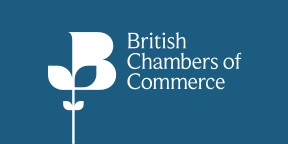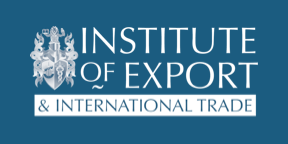BY:
SHARE:

HMRC have issued some BTOM guidance on some of the most common SPS errors experienced by traders and their agents at the border. The list includes errors up to the end of January 2024, with the view that publishing errors and guidance on how to avoid the mistakes may be helpful as we advance.
The summary is as follows:
General Errors
Common Error: Low-risk consignments with no accompanying commercial documents
Guidance:
- Low BTOM risk category consignments must be presented with relevant commercial documents from the supplier.
- You do not need to provide a health certificate.
- Low-risk consignments will not be subject to routine documentary, identity, and physical checks. However, from April 30, 2024, checks may still be undertaken where intelligence indicates a specific risk.
The published guidance on the working details required in the accompanying commercial documentation supporting the low-risk import of an animal product for human consumption can be found at the following link: Import food and drink from the EU to Great Britain
Common Error: Composites being incorrectly categorised:
Guidance:
Goods are being incorrectly identified as composite products and, as a result, are inaccurately classified as low-risk imports.
- Ensure your exporter has confirmed that the product is a composite product. The process is published at the link below, with a ‘Decision Tree’ and the supporting legislation: Defra_Composite-Products-Decision-Trees-Leaflet.pdf (publishing.service.gov.uk)
Common Error: Multiple health certificates attached to a single pre-notification.
Guidance:
- The rule of thumb is that each health certificate should be attached to a
single import notification. This means that a mixed load containing multiple medium-risk goods should have multiple import notifications.
- ‘Compound’ products (a single product containing medium-risk POAO that does not meet the definition of a composite) would be treated differently.
DEFRA intends to publish further guidance on compound products in due course.
Import Notification Errors
Common Error: Different risk categories (low/medium) on the same CHED
Guidance:
A separate pre-notification for any low-risk products included in a load should be submitted. These low-risk products must not be added to a notification for medium-risk products.
Technical Notes:
Different low-risk products can be notified on the same CHED under the following circumstances only:
- They arrive on the same means of transport
- They are travelling to the same initial destination in GB
Different medium-risk products can be combined into a single CHED under the following circumstances:
- They arrive on the same means of transport
- They are travelling to the same initial destination in GB
- And they are covered by a single EHC.
Compound products with multiple EHCs for a single physical product are treated differently. Guidance can be found at the following link: Import compound products from the EU to Great Britain - GOV.UK (www.gov.uk)
Common Error: ‘Description of goods box’ on CHED P does not match EHC.
Examples of errors on CHED box P that do not match the EHC
- Net weights
- Gross weights
- Commodity codes
- Package numbers
- Package description (e.g., pallets, boxes, crates).
Guidance:
The BCP inspector will check that the health certificate and/or commercial documents match the CHED notification.
Recommendation: When notifying, make your goods' identification details crystal clear, and double-check that the details match the health certificate and/or the commercial documentation.
Note: During a physical check, the inspector will check that the product matches what has been declared and certified. Checking the details of the pre-notification will help avoid unnecessary delays at the border.
Common Error: Consignee details on CHED P do not match EHC
Guidance:
Consignee details across the CHED and EHC should be consistent.
Technical notes:
- A change since April this year: It is now possible to notify the PHA of any changes to the consignee information post certificate being issued. A replacement certificate will no longer be required.
- Goods imported under the Certification Logistics Pilot (CLP) may find that data may not match from CHED to EHC (see link below:)
Common Error: Consignor details on CHED P do not match EHC
Guidance: Consignor details mismatch
The consignor details in the CHED and EHC should be consistent and match, including spellings and abbreviations.
Note: For goods imported under the Certification Logistics Pilot (CLP), this may not match from CHED to EHC.
The Certification Logistics Module Pilot link is below:
Certification Logistics Module Pilot requirements
Common Error: An EU address is provided for the operator responsible for the consignment instead of a UK address.
Guidance:
- The operator responsible for the consignment is the operator responsible for completing and submitting the CHED in IPAFFS
- They may be the importer or someone acting on the importer’s behalf.
Technical Note: Definition - The operator responsible for the consignment is not a UK-established business with a physical presence in the UK. Examples:
- Importers, EU/EFTA-based producers, and exporters responsible for the end-to-end import process.
- Those delivering DDP into the UK (Delivery Duty Paid) must: establish a registered UK business premises or office
or
appoint a representative who is based in the UK, such as a Customs clearing agent
Common Error: Not completing the establishment field in the CHED
Guidance: The import notification should include the establishment of the origin of the goods.
Export Health Certificate Errors
Common Error: Signed and Verified Electronic PDF certificates in TRACES that have been altered to add electronic versions of physical stamps and electronic versions of wet signatures.
Guidance:
Signed and Verified Electronic PDF certificates in TRACES should not be altered.
Common Error: Data missing from the model health certificate.
Guidance:
The model health example certificates cover all import requirements for animals and animal products in Great Britain, the Channel Islands, and the Isle of Man only.
- Competent authorities should create official documents for exporters, which should include all the information from the model certificates.
- Do not copy the model health certificate examples provided on gov.uk.
Common Error: Attestation incorrectly deleted
Guidance:
Check attestations are completed and deleted following the model certificate 'notes for completion' and that all non-applicable attestations are correctly deleted or omitted from the certificate.
Technical Notes:
- Deletions carried out by hand must be initialled and stamped.
- If completed electronically as a verifiable PDF, the signature and stamp per page are sufficient.
Common Error: Region of Origin displayed on CHED but missing on Part One of the EHC
Guidance:
The Region of Origin must be completed and corrected before the import notification is submitted.
Common Error: The list of attestations on the reverse of the EHC is inaccurately selected.
Guidance:
The regulatory attestations on the reverse of the EHC must be selected and deleted accurately, with all the regulatory information to be included in the attestation.
Common Error: Region of Origin completed incorrectly.
Guidance:
The guidance is provided in the link below:
Common Error: The Local Authority is given as a name of a city or an area, rather than an actual Local Authority by regulatory definition.
Guidance:
- The Local Authority, by regulatory definition, should be the organisation responsible for issuing and overseeing the certification.
- It is not always a local authority that does this. In such cases, the central and local authorities are the same organisation, which should be reflected here.
Common Error: EHC was signed and dated after the dispatch date.
Guidance:
The EHC must always be signed and issued on or before the dispatch date.
- The only exception would be a cancel and replacement (C&R) certificate if the Port Health Authority has permitted this.
- The C&R would be cross-linked and referenced to the original certificate and date of issuing, with the original signed in advance of dispatch.
Technical Note: For animal products, the time of dispatch is not required in the EHC
Further Detailed Information - Common Error: Incorrect model certificate provided
- Competent Authorities in EU countries must provide a health certificate to exporters of animals and animal products to Great Britain (England, Scotland, and Wales), the Channel Islands, and the Isle of Man. The model health certificate published on GOV.UK is not for the purpose of another country's Competent Authorities.
- The model health certificates cover all the import requirements for animals and animal products in Great Britain, the Channel Islands, and the Isle of Man.
- You must not directly copy the model health certificates provided on GOV.UK. Competent authorities should create official documents for exporters to use.
These should include all the information from the model certificates.
Note: Certain consignments have been imported using certificates bearing the ‘model certificate only’ watermark downloaded from GOV.UK. - If your product is medium risk and the UK provides no EHC, you may need an import license or authorisation. More details are available on the following link : https://www.gov.uk/government/publications/risk-categories-for-animal-and-animal-product-imports-to-great-britain
- If your product is medium risk and an EHC is provided for it by GOV.UK but you are unable to obtain an EHC from an EU competent authority, you should contact imports@APHA.gov.uk
Common Error: Signature errors
Guidance: If a paper certificate is used, it must bear the certifying officer's signature and stamp.
- Verifiable PDF certificates must bear a valid digital signature.
Common Error: Pages not numbered or numbered incorrectly
Guidance:
All pages of the certificate must be sequentially numbered. It’s worth the effort to check page numbering.
Common Error: No regionalisation code was provided
Guidance:
If a product is subject to regionalisation measures, you must include the correct regionalisation code as selected from the list published at the link below:
A Summary of 31 Jan SPS BTOM common errors can be found at the link below:
createsend.com/t/y-C98A103DD26ADAEC2540EF23F30FEDED
OneCall™ Email assistance as and when required; A one-call solution for all your import, export and customs enquiries. Export help. Import help. Customs help.
Stay informed about customs and international trade matters by subscribing to our OneCall™ service. This comprehensive offering includes a dedicated email helpline for support, timely practical updates direct to your inbox (Did You Know?), monthly UK Customs & Trade Briefings and access to an interactive members' area with an exclusive community for our subscribers.
International Trade Updates & Spotlight Newsletter
Subscribe to our free information emails covering international trade topics...









